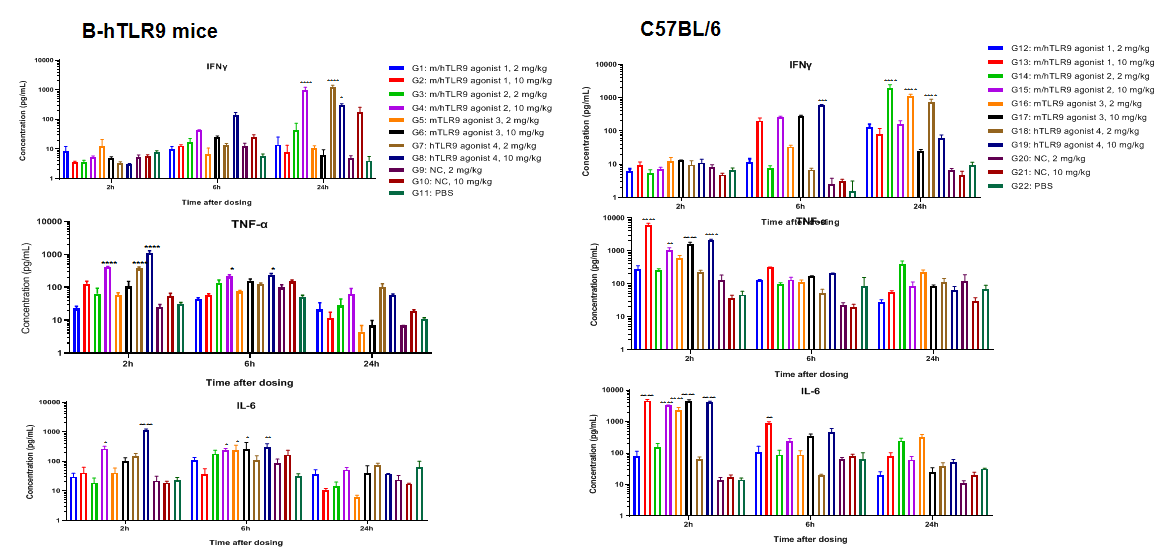| Strain Name |
C57BL/6-Tlr9tm1(TLR9)Bcgen/Bcgen
|
Common Name | B-hTLR9 mice |
| Background | C57BL/6 | Catalog number |
110103 |
|
Related Genes |
TLR9 (Toll-like receptor 9) | ||
|
NCBI Gene ID |
81897 | ||
Protein expression analysis in B cells

Strain specific TLR9 expression analysis in homozygous B-hTLR9 mice by flow cytometry. Splenocytes were collected from WT and homozygous B-hTLR9 (H/+) mice, and analyzed by flow cytometry with species-specific anti-TLR9 antibody. Mouse TLR9 was detectable in WT mice and homozygous B-hTLR9 due to the anti-mTLR9 antibody is cross-reactive between mice and humans. Human TLR9 was exclusively detectable in homozygous B-hTLR9 but not WT mice.

Protein expression analysis in NK cells

Strain specific TLR9 expression analysis
in homozygous B-hTLR9 mice by flow cytometry. Splenocytes
were collected from WT and homozygous B-hTLR9 (H/+) mice, and analyzed by flow
cytometry with species-specific anti-TLR9 antibody. Mouse TLR9 was detectable
in WT mice and homozygous B-hTLR9 due to the anti-mTLR9 antibody is
cross-reactive between mice and humans. Human TLR9 was exclusively detectable
in homozygous B-hTLR9 but not WT mice.


Strain specific TLR9 expression analysis in homozygous B-hTLR9 mice by flow cytometry. Splenocytes were collected from WT and homozygous B-hTLR9 (H/+) mice, and analyzed by flow cytometry with species-specific anti-TLR9 antibody. Mouse TLR9 was detectable in WT mice and homozygous B-hTLR9 due to the anti-mTLR9 antibody is cross-reactive between mice and humans. Human TLR9 was exclusively detectable in homozygous B-hTLR9 but not WT mice.

Function analysis

Strain specific mIFN-γ, mTNF-α and mIL-6 expression analysis in homozygous B-hTLR9 mice by ELISA. Wild-type C57BL/6 mice (+/+) and homozygous B-hTLR9 (H/H) were treated with TLR9 agonists (provided by a client) at different doses, then blood were collected at 2 h, 6 h and 24 h post s.c. injection and analyzed by ELISA with species-specific mIFN-γ, mTNF-α and mIL-6 ELISA kit (n=3).
Tumor growth curve & Body weight changes










